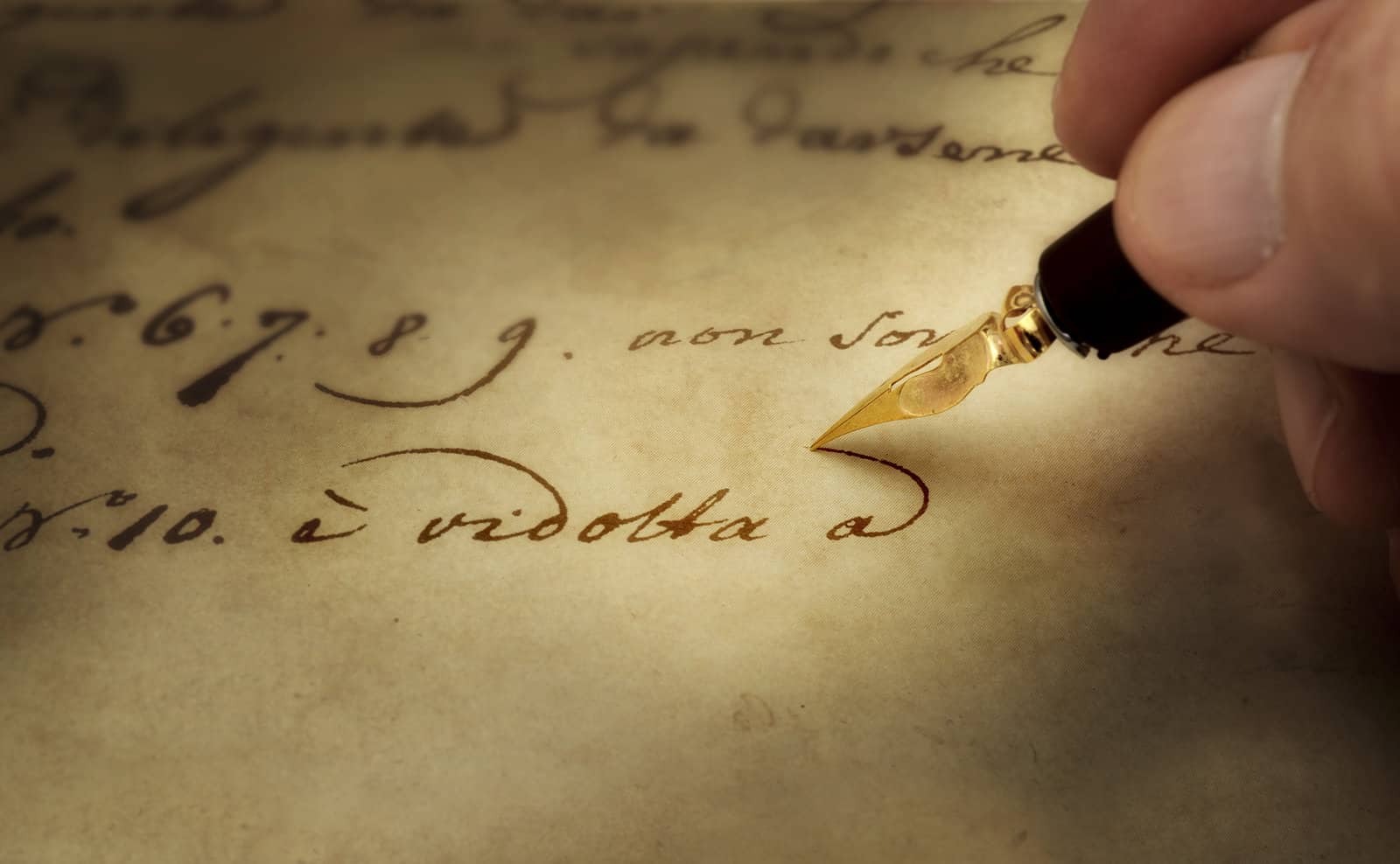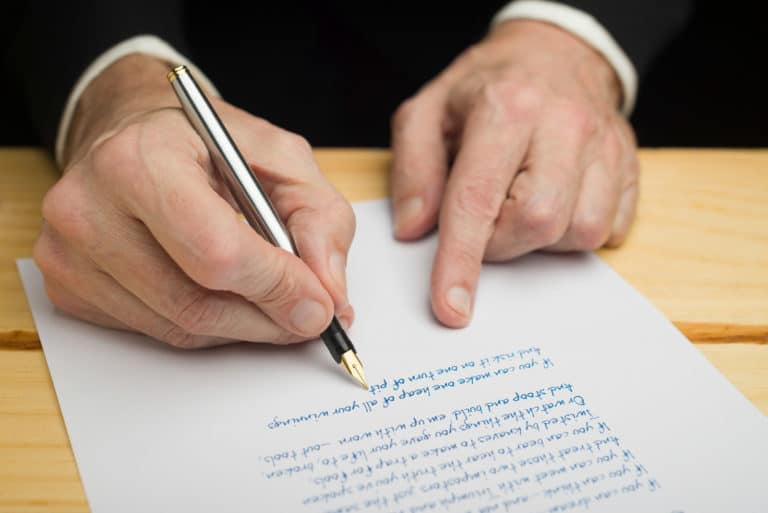Do Fountain Pens Improve Handwriting?
If you have chicken-scratch handwriting, you’re probably looking to improve it. You’ve heard about different techniques, but do fountain pens improve writing?
Fountain pens can help with penmanship and improve your handwriting because the ink flows effortlessly, letting you write without pressure and a less cramped grip.
However, fountain pens are not a cure-all for bad writing, and it will take practice, patience, and awareness on your part to grow your penmanship. We will explore how you can improve your handwriting further in this article.
How Can Fountain Pens Improve Handwriting?
Handwriting is an art form that’s becoming lost to the modern world. Using a fountain pen can help make hieroglyphic-like chicken scratch more visually appealing. There’s a deliberate focus of the mind onto the paper regarding the fountain pen. Plus, you don’t have to apply as much pressure as you would with a ballpoint or rollerball, and it requires a light touch with quick, decisive strokes.
But, the older a person is, the more set they are in their manner of handwriting. Not that an older person can’t learn to write better, but it will take more effort. Because it’s easier for them, children must learn how to write well with a fountain pen at a young age, and they will carry it with them well into their adult years.

What’s the Best Way to Use a Fountain Pen to Improve Handwriting?
Practice is the only way to improve handwriting with a fountain pen. Keep in mind that it will take time to discover what works best for you.
Love Your Fountain Pen
If you want to write better, it’s crucial to have a fountain pen you love. If it scratches funny on the paper’s surface or the size of the stylus is awkward in your hand, it will be challenging to improve your handwriting with it. You may have to try out several types of fountain pens before you find one you like.
Proper Paper
Also, don’t forget the paper. You don’t just want to use notebook paper or even multipurpose paper for your printer. Ensure you have nice, thicker poundage with a smooth surface on which the pen can glide.
Buy Things You Can Touch and See
Going to a specialty pen store will help you decide which kind of fountain pen and paper will be best for you. It will give a tactile experience, and you’ll get a feel for it. You’ll also be able to ask any questions or have the store place a particular order if needed.
It’s also a good idea to understand the various nib sizes and what they can produce on paper:
- Narrow, fine, and extra-fine creates a smaller font with exact lines. These are ideal for writing letters, notes, and diary/journal entries. However, newcomers tend to tear the paper with the tips because they can be sharp.
- A medium nib tip will provide a more manageable for beginners. They don’t have the potential to scratch and tear the paper as much as fine tips do. They provide for a more standard type of writing experience.
- Broad nib tips are excellent for graphic artwork and creating cards, announcements, and scrapbooks. However, these tend to bleed ink easily and can destroy an entire piece of paper.
Deciding on the Right Tools
Consider your use of pens in general. For instance, you are likely writing upright if you often use rollerball pens. Use a medium-sized and even-edged nib so that you can mimic how you already handle a pen.
Then, move on to bevels, fine, or big and broad tips to play with the varying effects you can create. All are beautiful, but they take a special touch and understanding of the nib. Left-handed writers have to pay particular attention because their hand will smudge the ink if it rests on the paper.
Instructions for Better Fountain Pen Handwriting
Set yourself up at a desk when you have a pen and paper you’re happy with. Consider the following to improve your handwriting:
- Be Patient; Relax: Let this experience be an enjoyable and relaxing experience. If you find yourself tensing up, you’ll also find that you’ll grip the pen too hard, and you won’t produce the shapes, curves, and lines you’re striving for.
- Posture Is Everything: Pay attention to the angle of the nib, how you’re sitting in relation to the surface and where your feet are resting on the floor. If you’re sitting cross-legged in your chair, you may strain your shoulders and neck while writing with a fountain pen. Ensure your spine is erect.
- Test the Nib: Take one sheet of paper and test the nib with the ink. Make downstrokes, upstrokes, waves, angles, long lines, short lines, and circles. Get a feel for how it goes and in what ways you have to push the pen to complete full strokes without creating harsh, uneven lines.
- Pay Attention to Holding: Make a conscious effort to notice how hard you’re holding the pen throughout the process. It should be firm, but it also shouldn’t be too loose. You want to have a happy medium between the two.
- Pay Attention to Pressure: If you notice a lot of streaming ink while creating strokes, you’re probably pressing too hard. Also, if you do this consistently for too long, you can damage the nib tip. So, be mindful of how hard you’re pressing into the paper. Your pen should glide lightly and swiftly over the surface.
- Go Slow: Write each letter of the alphabet slow and steadily. There’s no need to rush things. When you’re confident with the alphabet, then write down numbers. Once you completely understand how your pen operates against the paper and how you need to write to create strokes, go for entire sentences and paragraphs.
Final Thoughts
While fountain pens can do a lot to improve your handwriting, improvements to your handwriting will rely on how much practice you put into it. But, remember, the pen alone isn’t going to make your penmanship more beautiful. This is all about pure effort, but the results will be worth it in the end.






